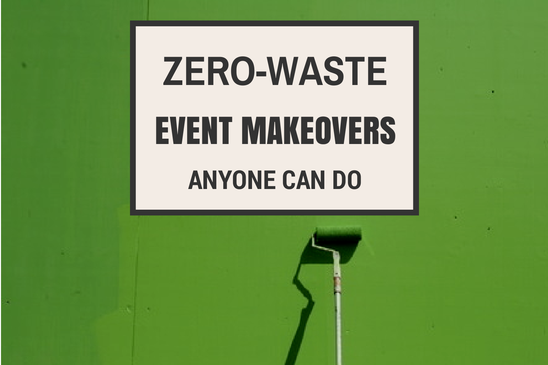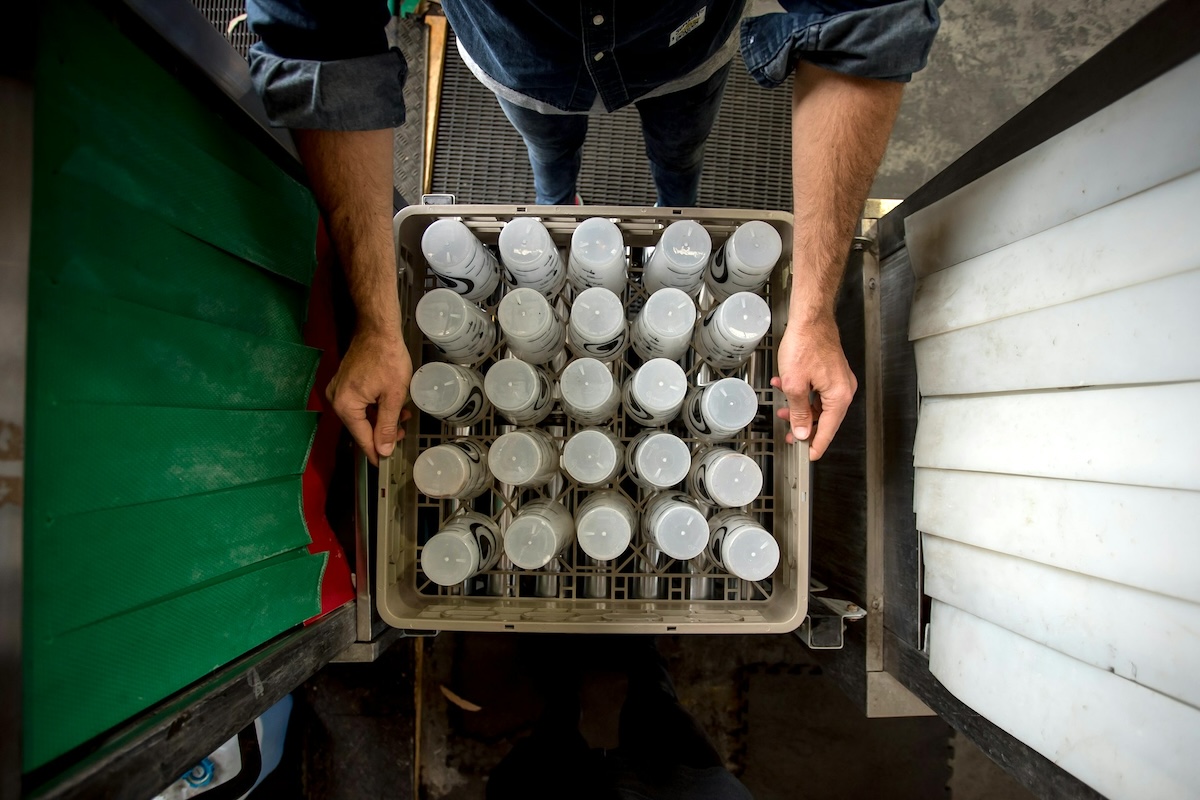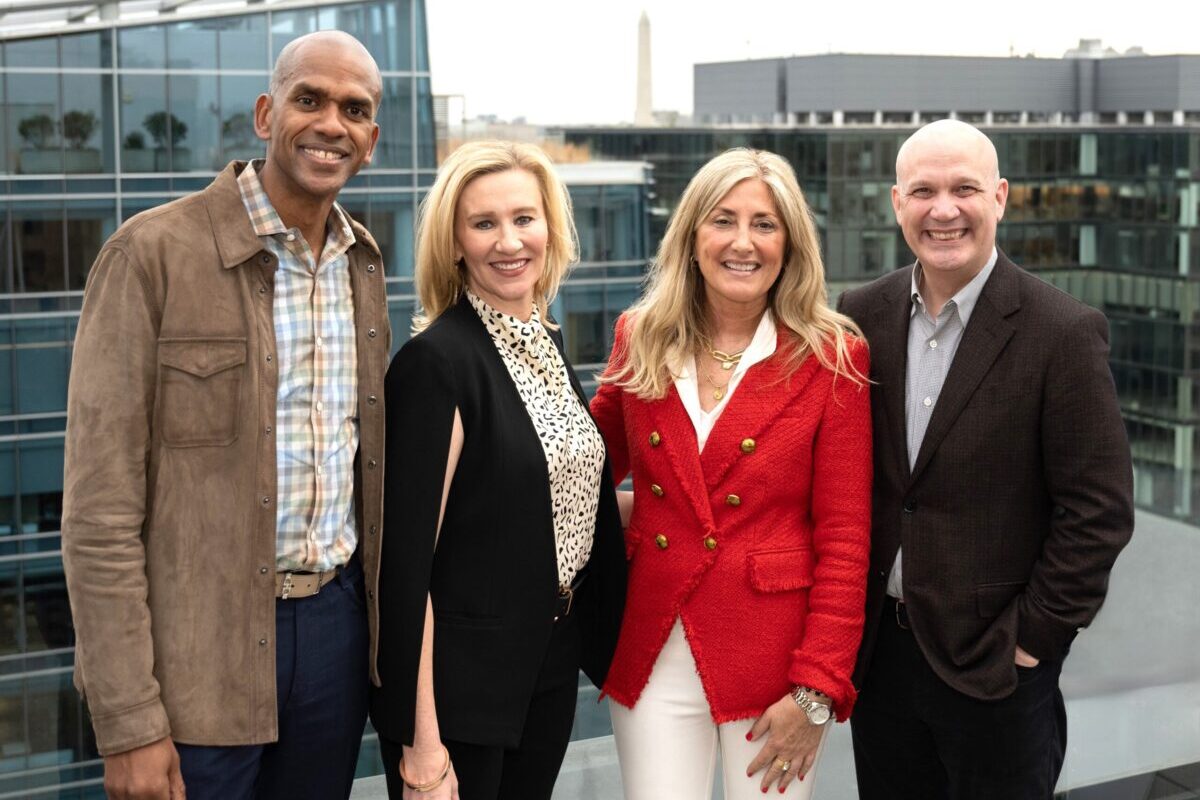When it comes to eliminating waste at your event, a picture is worth a thousand words. Following are two examples of seriously simple, low- to no-cost ways to reduce event waste that anyone can accomplish.
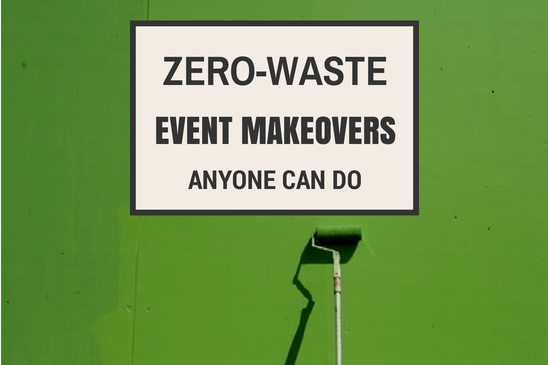
The Break Service
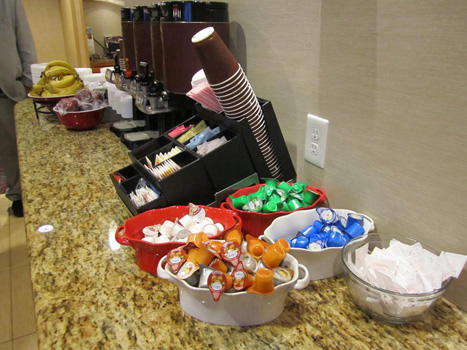
Note the following potential for landfill waste: single-serving sugar, non-recyclable plastic creamers and stir sticks, polystyrene coffee cups, lids and plates, and plastic-wrapped apples.
Before we scoff that the scene is all bad, there are some redeeming aspects. After all there are bulk beverage dispensers and linenless counters. And fruit is a healthier alternative to sweet pastries and snacks.
After: Refreshment Counter, Greener Lodge, USA
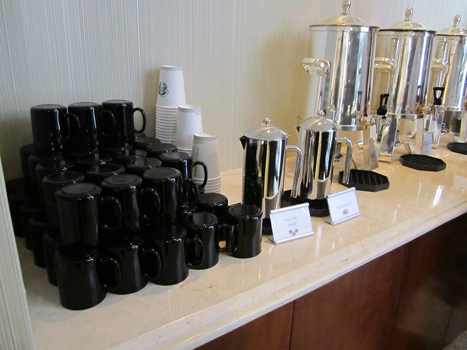
Notice the following zero-waste touches: saucer-less reusable mugs, linen-less tables, no polystyrene to-go cups or lids, and bulk dispensers for cream.
Of course it’s not perfect, either. To be truly zero-waste the to-go cups could be eliminated. And we’d need to know what is not pictured: wooden stir sticks and bulk sugar and honey. However, the reduced waste touches are notable and ridiculously simple. And the more elegant presentation doesn’t hurt either!
Some facilities may be limited in their ability to totally eliminate disposables, especially if full kitchen or dish-washing facilities are lacking. However, zero waste can still be achieved in this situation if compostable disposables are used in concert with a composting program.
Which leaves the economic question of which may be more expensive? In my experience leaner, greener breaks like the latter example are no more expensive, in spite of the added labor that may be involved in servicing them. In fact when compared to the estimated 16% extra you can pay on packaged goods, any financial losses and gains from either presentation tend to come up neutral.
And what of the concern that reusable cups may have a greater impact due to washing and energy use? The answer is not always obvious, especially if your event has a high propensity for breakage. However, in researching the emissions produced by 2,000 uses of reusable and disposable cups, ceramic cups emerged as the most carbon-sensitive choice, followed by foam and paper, if you take into account manufacturing, washing and disposal.
The Event Waste Station
Before: Is this a trash bin? Or a recycling bin?
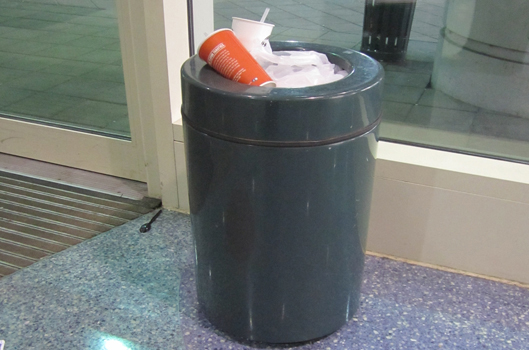
One would guess it was a landfill bin judging by the way it’s being used. But that green-blue color is a bit confusing! It sure would help if there were other bins around to compare it to. Or a sign, maybe?
After: The Three-Stream Waste Center
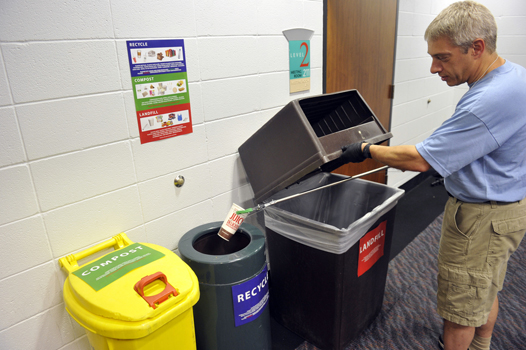
Recognize anything from the other photo? That’s right – that little confusing trash bin in the earlier photo is now clearly signed for recycling: its intended use. This pair of photos is a true before-and-after of a convention facility that repurposed its existing bins into temporary, no-added-cost, three-stream waste stations. Even if you opted to only provide recycling and landfill, and not do front-of-house composting like this event, there are easy tips to take-away:
1. Place waste bins in areas where your attendees will use them, such as near food areas and entry and exits to major session spaces.
2. Remove all other bins except those you have deliberately placed, including little waste bins that may be in meeting rooms or exhibit booths.
3. Provide clear, color-coded signs for each stream so that your guests know the “recycling rules”.
4. Use a combination of photos and words to describe what goes in each bin, particularly important for international audiences.
5. Make sure the photos match the look of actual items guests will use onsite, to minimize guess-work.
6. Cluster containers together, avoiding lonely landfill or reclusive recycling bins that could get contaminated with the wrong kind of waste.
I’ve seen simple steps like this improve waste diversion from landfill anywhere from 5-30%. The suggestions above take little effort, and if you are seeking aggressive zero-waste targets you could go farther:
1. Contact the recycling company pre-event and plan to eliminate any items they may not take-back, like polystyrene, vinyl and film plastic.
2. Pay attention to the color of your bins, and match them to your signs if you can.
3. Plan to use see-through bags, so you can check contents without having to open up the bag. Here a translucent bag is used, but you could also opt for color-coded bags: black for landfill, translucent white for recycling and green compostable bags for organics (if permitted).
4. A volunteer helping sort waste also helps, but is not necessarily always possible.
In Conclusion
Some zero waste event solutions are complicated, requiring extensive product research, experience redesign and added labor. Sometimes, however, eliminating landfill and hauling costs is as easy as making a few simple adjustments to things as universal as break stations and waste bins. Steal these before-and-after ideas of how you can make progress toward a zero-waste event.
